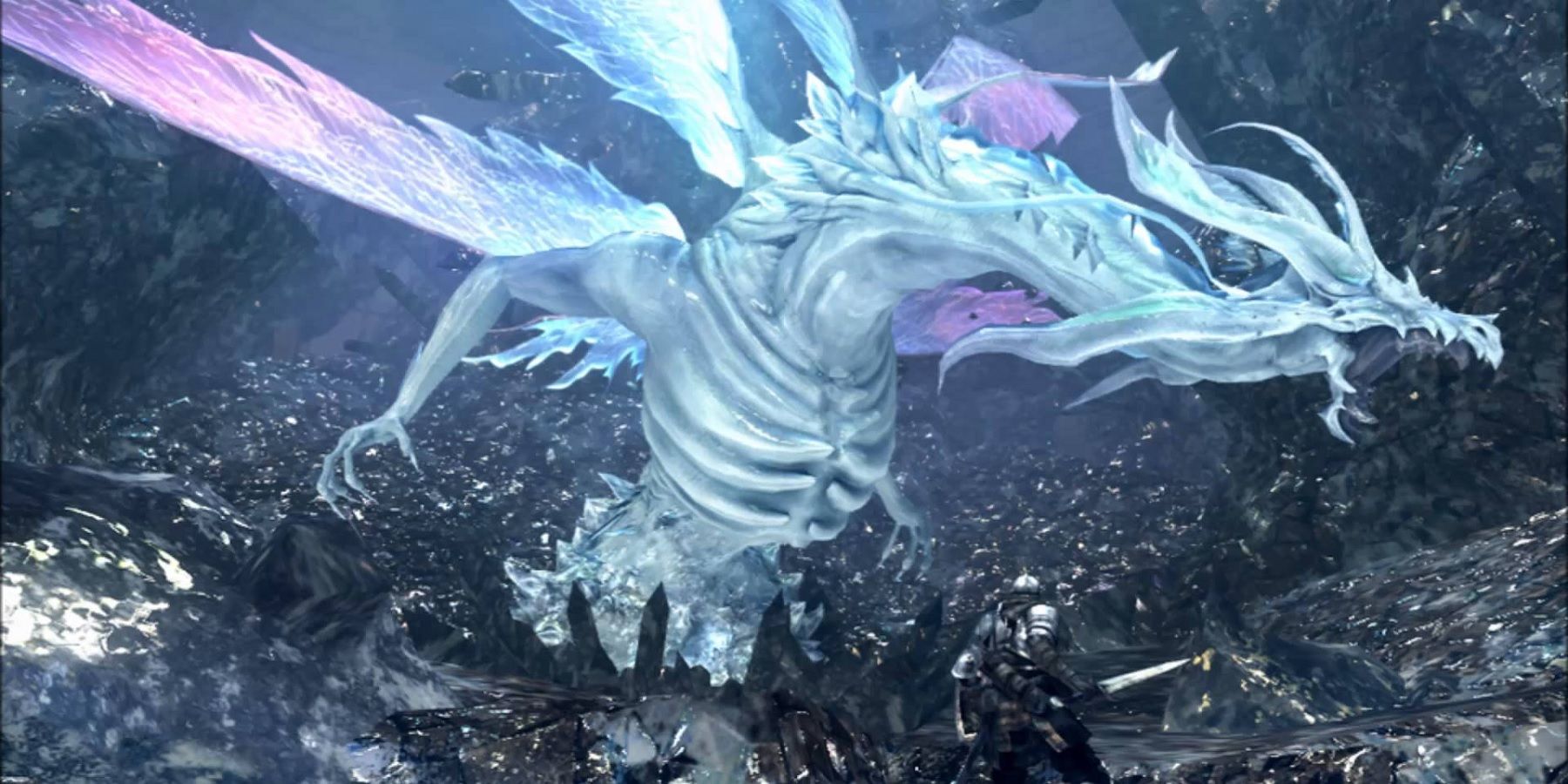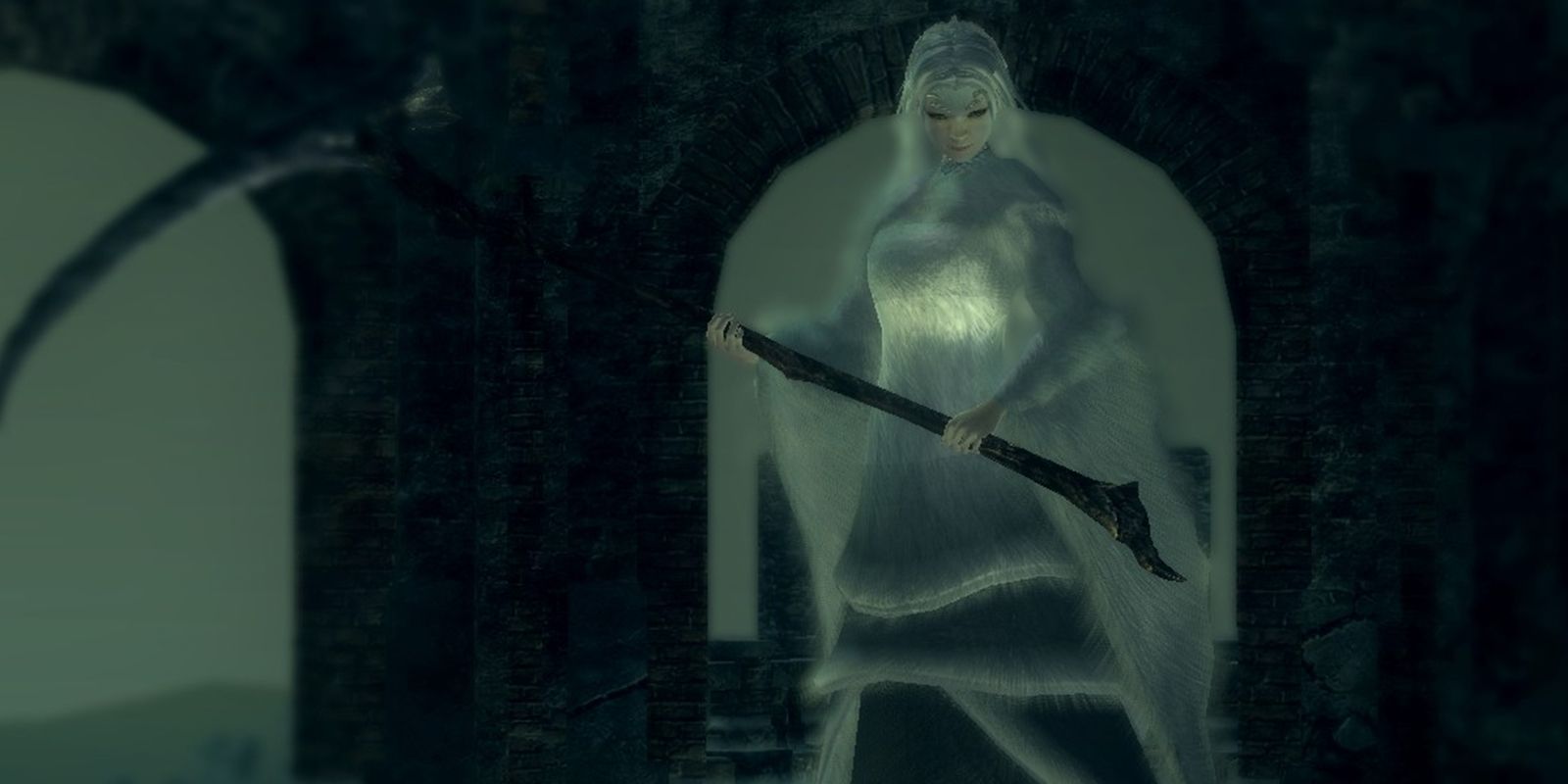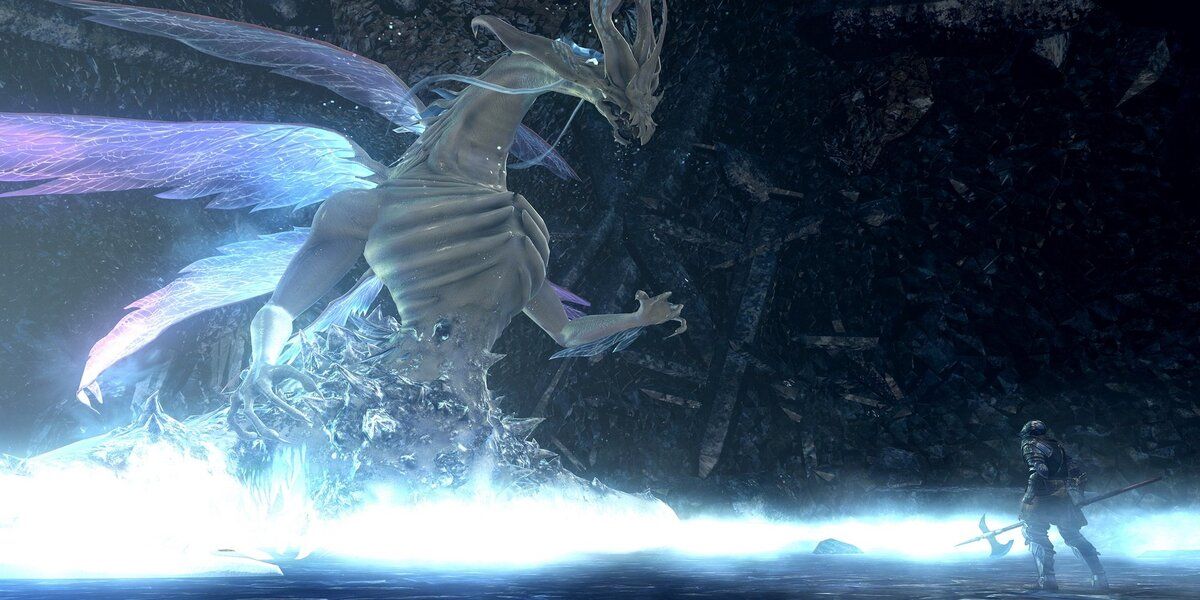While the backstory and lore in Dark Souls isn't something that FromSoftware presents explicitly, following the information from character dialogue, item descriptions, and environmental placements is a huge part of the experience for some fans. To that degree, few bosses hold the same level of Dark Souls' iconic lore details as Seath the Scaleless, although his boss encounter somewhat suffers from being over-hyped.
The result is a boss that can have a lot of impressive build-up depending on what quest lines the player pursues, but doesn't quite pay off in the same way other lore-heavy encounters do. This is especially compounded by how Seath the Scaleless is in the background of two Dark Souls sidequests, as one NPC's obsession and as another boss' origin.
Seath the Scaleless Holds a Complex Backstory
With Seath the Scaleless being one of the four main bosses to be bequeathed a shard of a Lord's Soul, he becomes one of the main goals for the player to hunt down on their path towards replacing Gwyn. However, like the other primary bosses, Seath's backstory goes a bit deeper, as he is also one of the few surviving dragons in Dark Souls from the previous age before Gwyn and the other Lords. Dubbed "the Scaleless" Seath was not naturally immortal like the other dragons, eventually betraying the others by revealing that the everlasting scales had a weakness to lightning.
Beyond this initial betrayal, Seath's backstory also continues with two major events, he eventually is named Duke and bequeathed a shard of a Lord's Soul, and he has a crossbreed daughter named Priscilla. Being named Duke eventually leads to Seath discovering a new form of immortality by studying a specific type of crystals linked to sorcery and moonlight. On the other hand, Priscilla's birth expands out into Dark Souls' painted worlds, which eventually becomes the host for a set of lore that follows all the way through to the Dark Souls 3 DLC areas.
All of this backstory goes leagues beyond some of the other main bosses, Gravelord Nito or the Four Kings, who have their place in the lore but not quite the impact on the series as a whole. This is also amplified by the fact that Seath is a recurring character that was first introduced in the King's Field series, and consistently tied to the Moonlight Greatsword. So, it's surprising when the first actual introduction to Seath is an uneventful fight where the player is forced to lose, and then the rematch is one of the easiest bosses in the series.
Where Seath the Scaleless Fails as a Fight
It isn't uncommon for a player to die against any FromSoftware boss on their first attempt, or even their thirtieth. However, it is uncommon for that death to be scripted in such a way that the player could have never possibly won in the first place, and yet that's the introduction to Seath the Scaleless. Players fight their way through the beginning of the Duke's Archives, past two armored boars, a chancellor, the crystal armor Hollow, and a host of skeleton soldiers and archers, only to be met with a boss that can't be hurt or killed. It can make for an impactful initial encounter, but it builds the expectation for an equally impactful fight after escaping Seath's jail cells.
Unfortunately for Seath, his final fight comes down to a single gimmick and an overall easy encounter, as long as players aren't going for a tail cut and getting the hidden reward that became a trend with early Dark Souls dragons. The main gimmick of the fight is to break the crystal in the back of the room, as this is the only way to remove Seath's immortality and allow the player to actually deal damage. However, the crystal never repairs itself or comes into play beyond hitting it once to destroy it, something that even Seath himself is capable of doing by accident.
Once the crystal itself is broken, Seath isn't much of a threat as long as players can read which one of his three attacks he's doing when they are at attack range. Seath will either swipe his claws directly down after a long telegraph, breathe damaging crystals in a horizontal or vertical line, or create a crystal explosion that can curse or kill a player that doesn't run away immediately. All of these are fine examples of being well-telegraphed moves with ample time to respond, but many of them become increasingly obvious to the point that Seath becomes one of the easiest bosses to beat in Dark Souls without getting hit.
This can also be topped off by the previously mentioned tail cut, which takes the fight from boringly easy, to frustratingly difficult, as Seath's tail is very far behind him, and he can swivel around at mock speeds. The result is an optional weapon grab that essentially requires the player to trick Seath into breaking his own crystal and deal more than five hundred damage in a single swing to a very specific part of the tail. So, locking Dark Souls' iconic Moonlight Greatsword behind this extra annoyance means that most players will likely never even see the weapon in this game.
Dark Souls is available now for PC, PS3, PS4, Switch, Xbox 360, and Xbox One.



